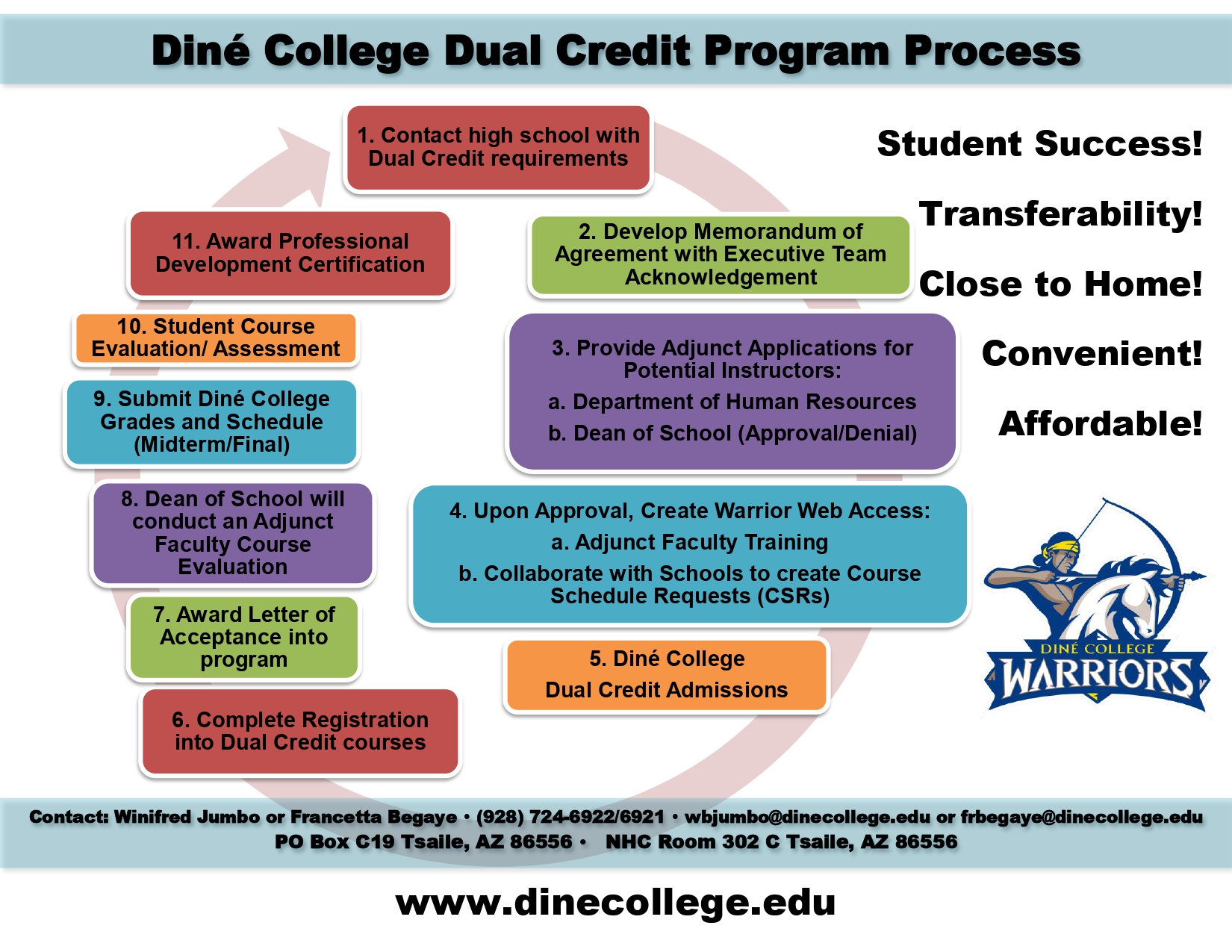Dual Credit Teacher/Instructor Eligibility
A teacher desiring to offer courses for dual credit through Diné College must meet the following criteria:
- Candidate should have a minimum of a Master’s Degree but some courses require a minium of a Master’s Degree and 18 credit hours in the content area.
- Potential adjunct faculty must be approved as an adjunct instructor for Diné College by a School Dean before the teacher may instruct a dual credit course.
- Potential adjunct faculty will participate in a Diné College Dual Credit Program orientation prior to offering a course.
- Diné College School Dean will review course syllabi prepared by adjunct faculty every semester. The Faculty Evaluation will include an observation of the dual credit classroom.
Curriculum
Credit
Students enrolling in and completing a dual credit course will obtain a college transcript. The grade will be automatically recorded on their student record at Diné College. The student must request a copy of their transcript to forward the grade to another college or institution. Our dual credit courses will articulate to univerisities and colleges within the four-corners region.
AZTransfer – Arizona Transfer Options
Program Evaluation and Follow Up
Classroom visits by Diné College dual credit personnel and faculty will provide one avenue for ensuring that instructors teach appropriate content at appropriate levels for college credit.
High school candidate will submit curriculum to Diné College for approval of qualifications to teach dual credit courses. The qualifications for teaching these courses will be the same as those required for teaching the campus-based sections of the same course. The candidate will then be credentialed by Diné College to instruct dual credit classes at the partnering high schools.
A key component of program evaluation is determining participant access to post-secondary education after high school, as well as student success with their pursuit of post-secondary education. The program’s continuance will depend, in part, on the results of data, including rates of transition to post-secondary education and the number of students who require preparatory classes before pursuing additional coursework.







